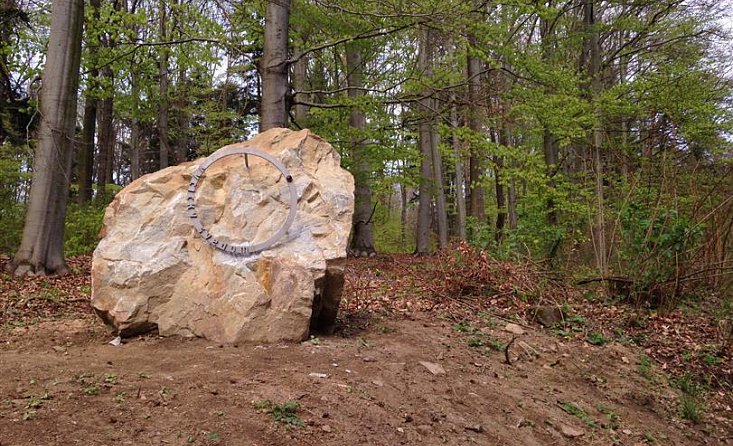
ROUTE OF PAINFUL STONES - MODERN MAN´S WAY OF THE CROSS
A meditative space under the open sky hears many quiet stories. Modern Man’s Way of the Cross in the Písecké Mountains has become a place from where it is easier to send requests and thanks to the heavens.
At the beginning of the imaginary route, there was a project prepared by students of the Business Academy and Language School in Písek; the singer Marta Kubišová and President of the Czech Christian Academy Tomáš Halík became its spiritual parents. The project is based on the symbolism of the Christian Way of the Cross and its legacy – fourteen pains – fourteen stations leading to the summit – stopping the hope. The students collected stories of people from old people’s homes, prisons, hospices, children’s homes, and other public institutions all over the country. Fourteen stories of positively overcome pains and one story of hope were selected and narrated by popular Czech actors and actresses. The stories are recorded on a CD and will be available through a mobile application. The Route of Painful Stones is a physical visualisation of an idea and tangible completion of the project.
Fourteen large quarry stones (weighing 5-7 tons each) of rather unusual and varied colours are positioned along the 1.5 km long route, ascending from the U Vodáka location through a picturesque area of a nature park up to the Písek foresters’ lookout under Jeník Hill (elevation 609 m). The stones embody the burden and its heaviness, their shapes and colours build on the principle of verticality surpassing the man. The unifying art element is the circle as a symbol of unity, absoluteness, infiniteness, and eternity. Its principle is present in each of the pains and culminates with the Hope station. This sculpture stands out; however, the motif of the circle links it to the other sculptures. It is not a burden any more, it is a promise. This circular sculpture, 2.5 m in diameter, is made of massive metal plates arranged into four segments whose edges depict the motif of a cross. The sculpture’s centre is ruptured by a disc made of matte glass through which light passes, “lighting” the dark metal surface as a hope close enough to be touched. The surface of the metal plates bears marks of more than a thousand projectiles shot at them – symbolic reminders of scars which remain imprinted in the memory after a fight.


